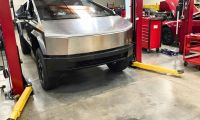There is no public information available on the exact amount of cost savings that Tesla is achieving with its dry electrode process. However, it is widely known that the company has been working on developing more efficient and cost-effective battery technologies, and the dry electrode process is a key part of that effort.
It is also worth noting that Tesla has stated its goal of achieving a 56% reduction in the cost per kilowatt-hour of energy storage. While it is unclear how much of this reduction can be attributed to the dry electrode process, it is clear that Tesla is making significant investments in battery technology to improve efficiency and reduce costs.
As for the current 4680 cell, it is a promising starting point for future battery technology. It is larger than previous Tesla battery cells, which allows for more energy storage per cell and a more efficient use of space in electric vehicles. However, it is important to note that the success of the 4680 battery cell and any future battery technology will depend on a variety of factors, including manufacturing efficiency, energy density, and cost.
Armen Hareyan is the founder and the Editor in Chief of Torque News. He founded TorqueNews.com in 2010, which since then has been publishing expert news and analysis about the automotive industry. He can be reached at Torque News Twitter, Facebok, Linkedin and Youtube.












